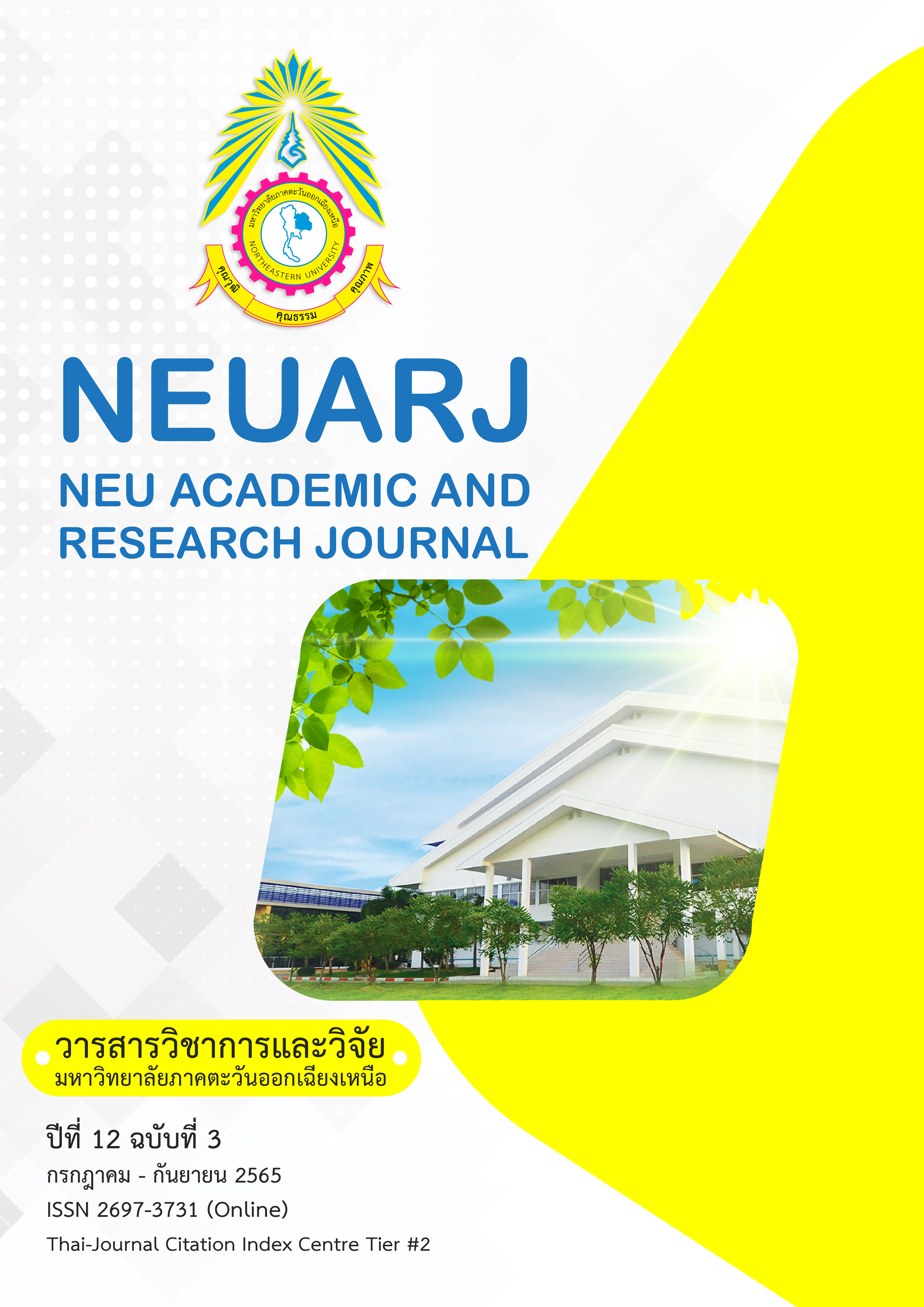Factors Affecting Financial Literacy of Grade 10-12 Students: Multilevel Structural Equation Model Analysis
Keywords:
Financial knowledge, Financial Behavior, Financial Attitude, Financial Literacy, Multilevel Structural Equation ModelAbstract
The purposes of the study were 1) to analyze causal factors at student-level of the students’ financial literacy, 2) to analyze effects of factors at classroom-level on the students’ financial literacy, and 3) to analyze effects of factors at school-level on the factors at classroom-level. The participants were 2,073 from students, teachers, and school administrators which randomly selected using sampling technique based on their regions and school sizes. The data were collected through an online questionnaire which was developed to meet the psychometric properties. They were then analyzed using multilevel structural equation modeling analysis (3-level). The results revealed that the family finance indoctrination had statistically direct effect on students' financial literacy at .05 level but had indirect effect through students’ financial experiences. When considering classroom-level factors, teachers’ financial literacy on learning management process of financial teaching, teacher’s learning management process had statistically effect on students' financial literacy at .05 level. The results also showed that school support for financial learning management, which was a factor at school-level on teachers’ financial literacy.
References
ธนาคารแห่งประเทศไทย. (2559). รายงานการสำรวจทักษะทางการเงินของไทย ปี 2559. กรุงเทพฯ: ฝ่ายส่งเสริมความรู้ทางการเงิน ธนาคารแห่งประเทศไทย.
ศิริชัย กาญจนวาสี. (2544). การเลือกใช้สถิติที่เหมาะสมสำหรับการวิจัย (พิมพ์ครั้งที่ 4). กรุงเทพฯ: บุณศิริการพิมพ์.
สำนักงานคณะกรรมการการศึกษาขั้นพื้นฐาน. (2563). จำนวนโรงเรียน นักเรียน และห้องเรียน ปีการศึกษา2560 – 2564. [กรุงเทพฯ]: กลุ่มสารสนเทศ สำนักนโยบายและแผนการศึกษาขั้นพื้นฐาน กระทรวงศึกษาธิการ.
ไสว ฟักขาว. (2558). ทักษะแห่งศตวรรษที่ 21 (21st Century Skills). สืบค้นเมื่อ 12 มิถุนายน 2565, จาก https://erp.mju.ac.th/openFile.aspx?id=Mjc2NTQx.
อัจฉราวรรณ จันทร์เพ็ญศรี. (2564). สภาพปัญหา ความต้องการจำเป็น และแนวทางในการพัฒนาคุณภาพการจัดการเรียนรู้ของครู ตามทัศนะของครูและผู้บริหารสถานศึกษาในจังหวัดนครนายก. วารสารวิชาการ มหาวิทยาลัยราชภัฏพระนคร, 12(1), 13-31.
Delavande, A. (2008). Preparation for Retirement, Financial Literacy and Cognitive Resources. Working Papers wp190, University of Michigan. Michigan: Michigan Retirement and disability Research Center.
Deng, H.-T., Chi, L.-C., Teng, N.-Y., Tang, T.-C., & Chen, C.-L. (2013). Influence of Financial Literacy of Teachers on Financial Education Teaching in Elementary Schools. International Journal of e-Education, e-Business, e-Management and e-Learning. doi:10.7763/ijeeee.2013.V3.195
Eberle, D. H. a. F. (2016). Teacher's Financial Literacy From a Swiss Perspective. springer science business media singapore. doi:10.1007/978-981-10-0360-8_43
French, D., & McKillop, D. (2016). Financial literacy and over-indebtedness in low-income households. International Review of Financial Analysis, 48, 1-11. doi:10.1016/j.irfa.2016.08.004
Garg, N., & Singh, S. (2018). Financial literacy among youth. International Journal of Social Economics, 45(1), 173-186. doi:10.1108/ijse-11-2016-0303
Hensley, B. J. (2015). Enhancing Links between Research and Practice to Improve Consumer Financial Education and Well-Being. Journal of Financial Counseling and Planning, 26(1), 94-101.
Ho, M. C. S., & Lee, D. H. L. (2020). School Banding Effects on Student Financial Literacy Acquisition in a Standardised Financial Literacy Curriculum. The Asia-Pacific Education Researcher. doi:10.1007/s40299-019-00491-z
Kagotho, N., Nabunya, P., Ssewamala, F., Mwangi, E. N., & Njenga, G. (2017). The role of family financial socialization and financial management skills on youth saving behavior. J Adolesc, 59, 134-138. doi:10.1016/j.adolescence.2017.05.013
Luhrmann, M., Gercia, M.S., Winter. J. (2018). the Impact of Financial Education on Adolescents’Intertemporal Choices. The Institute for Fiscal Studies
Lusardi, A. (2019). Financial literacy and the need for financial education: evidence and implications. Swiss Journal of Economics and Statistics, 155(1). doi:10.1186/s41937-019-0027-5
Lyons, A. C. (2006). Translating Financial Education into Behavior Change for Low-Income Populations. Association for Financial Counseling and Planning Education, 17(2), 27-45.
Moreno-Herrero, D., Salas-Velasco, M., & Sanchez-Campillo, J. (2018). Factors that influence the level of financial literacy among young people: The role of parental engagement and students' experiences with money matters. Children and Youth Services Review, 95, 334-351. doi:10.1016/j.childyouth.2018.10.042
OECD. (2018). financial literacy framework. PISA 2018 Assessment and Analytical Framework, 119. doi:https://doi.org/10.1787/a1fad77c-en.
Paul Ali, M. A., Cosima McRae and Ian Ramsay. (2016). The Financial Literacy of Young People Socio-Economicstatus, Language Background, and the Rural-Uuban Chasm. Australian and International Journal of Rural Education, 26, 54-66.
Potrich, A. C. G., Vieira, K. M., & Mendes-Da-Silva, W. (2016). Development of a financial literacy model for university students. Management Research Review, 39(3), 356-376. doi:10.1108/mrr-06-2014-0143
Sawatzki, C., & Sullivan, P. (2017). Teachers’ Perceptions of Financial Literacy and the Implications for Professional Learning. Australian Journal of Teacher Education, 42(5), 51-65. doi:10.14221/ajte.2017v42n5.4
Sholevar, M. (2019). Survey on financial literacy, financial behaviour, gender gap and financial education. Research Centre for Global Finance Department of Finance and Management SOAS.
Singh, A. (2020). Factors Contributing to the Financial Literacy of Individual: A Critical Literature Review. Raja Balwant Singh College, 8.
Sohn, S. H., Joo, S. H., Grable, J. E., Lee, S., & Kim, M. (2012). Adolescents' financial literacy: the role of financial socialization agents, financial experiences, and money attitudes in shaping financial literacy among South Korean youth. J Adolesc, 35(4), 969-980. doi:10.1016/j.adolescence.2012.02.002
Son, J., & Park, J. (2018). Effects of financial education on sound personal finance in Korea: Conceptualization of mediation effects of financial literacy across income classes. International Journal of Consumer Studies, 43(1), 77-86. doi:10.1111/ijcs.12486
Swiecka, B. (2020). Financial Literacy: The Case of Poland. Sustainability, 12(2). doi:10.3390/su12020700
Varcoe, K. P. (2005). Using A Financial Education Curriculum For Teen. Financial Counseling and Planning, 16, 63-71.
World Economic Forum. (2015). New Vision for Education Unlocking the Potential of Technology . Retrieved from https://www3.weforum.org/docs/WEFUSA_NewVisionforEducation_Report2015.pdf
Xiao, J. J., & Porto, N. (2017). Financial education and financial satisfaction. International Journal of Bank Marketing, 35(5), 805-817. doi:10.1108/ijbm-01-2016-0009
Zameer, Q. A., & Devasagayam, R. (2015). Cognitive Dissonance and Buyers’ Coping Mechanisms: A Comparative Study of US and Indian Consumers.

Downloads
Published
How to Cite
Issue
Section
License
Copyright (c) 2022 NEU ACADEMIC AND RESEARCH JOURNAL

This work is licensed under a Creative Commons Attribution-NonCommercial-NoDerivatives 4.0 International License.


